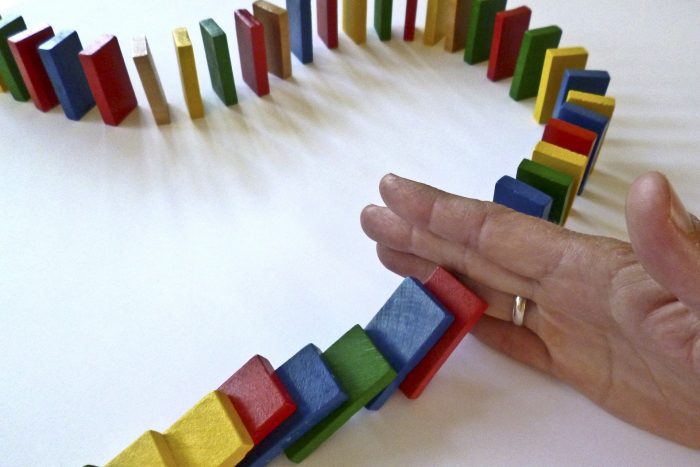D. None of the Above: Modern messages for a modern reality
By Daniel Dunaief

I read bumper stickers, buttons, fortune cookies and messages on T-shirts. They are a form of poetry that captures a moment, an approach, an attitude, and a message in fewer words than some of the soupier birthday cards.
Like birthday cards, sometimes these messages work, are amusing, evoke a reaction, or make me laugh for intentional and unintentional reasons.
In the modern world, in which so many interactions seem less than optimal or contrary to the intentions, I have some suggested messages that reflect the current state of customer service and civility, or lack thereof.
— Please don’t interrupt. I’m in the middle of looking busy. When I started working many years ago, someone told me to balance between looking busy and being under control. She suggested I walk quickly and purposefully, even if just to the bathroom, to suggest that I’m too busy to tackle something new that might involve lots of administrative work.
— Yes, I am talking to you. Those of you old enough to have seen the Robert De Niro film “Raging Bull” will understand this one instantly. This message captures the prevalence of confrontations.
— I have no idea what’s good. I don’t eat here. Diners often ask waiters and waitresses, “what’s good.” More often than not, they tell people what’s popular dishes or their specials. The subtext here is that some of them don’t, can’t or wouldn’t eat where you’re eating, especially after spending considerable time in the kitchen.
— Everything and nothing is special today. Keeping with the dining theme, while blending in some grade inflation, waiters could provide something philosophical for their diners to consume.
— I believe in building suspense. The assignment, the job, or even the entree may be later than someone wanted. This message could suggest the tardiness was deliberate and was designed to enhance appreciation and add drama. So, you’re welcome.
— Sure, you can ask. I like the buttons people wear at Yankees games that encourage fans to ask a question. On a day when these customer service professionals are feeling tired or hung over, they could don messages that encourage people to move along or to figure out how to drive home to Pennsylvania from the Bronx on their own.
— How can I appear to help you? Life is all about optics. Yes, we should be helping and yes, people are paid to help each other, in person, on phone and on the Internet. Sometimes, the person (or artificial intelligence programs) that is offering assistance isn’t delivering much.
— I brought my own questions, thanks. I would love it if a politician wore this button to a debate. On one level, it could suggest the candidate has questions that are hopefully substantive for his or her opponent. On the other, it could be an honest way of acknowledging the disconnect between a question about the environment and an answer about the person’s commitment to family.
— What can you do for me? This is a way of turning the tables, literally, on a hostile or inappropriate customer. It also discourages people from asking too much of someone who is not eager to deliver.
— Is there anything else I can’t do for you? I’ve been on numerous calls with people who haven’t done anything, particularly when dealing with traveling details, who then ask if there’s anything else they can help me with. When they haven’t helped me with the first question, it’s hard to imagine they can help with a second. A more honest message might suggest that they also anticipate not being able to provide any help with a second problem or question.
— What did you get me for my birthday? People often want, or expect, something, even from strangers, on their birthday. They don’t often consider that the person from whom they expect service, help or extra treatment had a birthday they likely missed.







